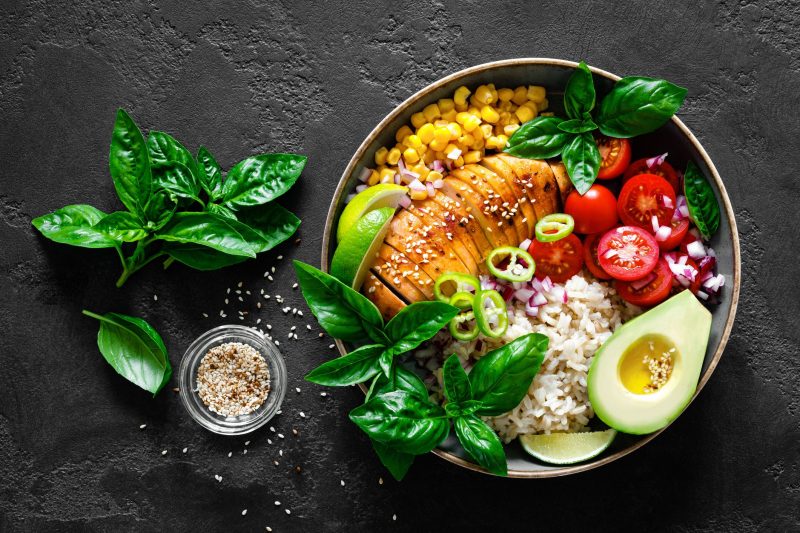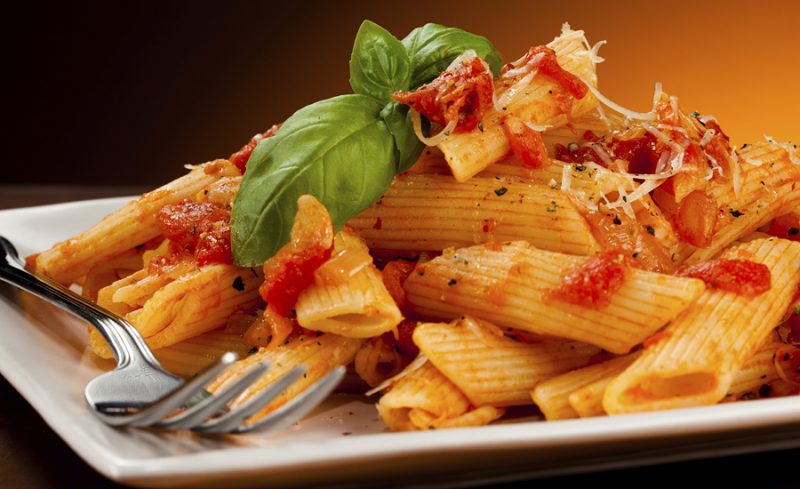Picture this: a cozy evening at home, and suddenly, a powerful craving for pizza strikes. But alas, your trusty oven is temporarily out of commission, and the pizzeria is a bit too far for a quick fix. What’s a pizza enthusiast to do? Fear not, because I’ve been there too, and I’ve got just the solution for you. In this guide, we’ll dive into the art of cooking a frozen pizza to perfection on a stovetop. It’s a quick, oven-free remedy for those moments when you need a slice of cheesy, melty goodness pronto.
And let me tell you, stovetop pizza cooking is not just a workaround; it’s a whole world of culinary delight waiting for you.
But enough about me; let’s focus on you and your pizza quest. Stovetop pizza cooking isn’t just a handy trick; it’s a versatile skill that can save the day in unexpected situations. It’s also perfect for those with limited kitchen space or anyone looking to elevate their pizza game. So, join me as we roll up our sleeves and explore the enticing world of stovetop pizza cooking.
Advantages of Stovetop Pizza Cooking
Quick and Convenient
Imagine this scenario: a hectic day, and suddenly, that pizza craving hits like a lightning bolt. Waiting for an oven to preheat feels like a lifetime, doesn’t it? This is where stovetop cooking swoops in like a culinary superhero. It’s a swift and straightforward process that can have your pizza ready to devour in record time. You’ll be savoring that first, perfectly crispy bite much faster than if you were using a traditional oven.
No Oven Required
The most obvious advantage is right in the name – no oven required. Say goodbye to the frustration of dealing with a malfunctioning oven or the annoyance of waiting for it to reach the right temperature. With stovetop pizza cooking, you can indulge in a piping hot and crispy pizza without any oven-related stress.
Perfect for Limited Kitchen Space
Let’s face it, not everyone has a sprawling kitchen with top-of-the-line appliances. Many of us find ourselves in cozy apartments or dorm rooms with space constraints. That’s where stovetop pizza cooking truly shines. All you need is a stovetop pan, and you’re ready to embark on a pizza-making adventure, no matter how small your kitchen may be.
In the next section, we’ll delve into the essential tools and ingredients you’ll need to kickstart your stovetop pizza journey. So, grab your pan, and let’s make some pizza magic!
What You’ll Need to Cook Frozen Pizza on a Stovetop
Now that you’re ready to embark on your stovetop pizza adventure, let’s make sure you have the right tools and ingredients at your fingertips. Here’s a rundown of what you’ll need:
1. Stovetop Pan
A good quality stovetop pan is the heart of this operation. Opt for a non-stick pan with a lid. This trusty companion will help ensure even cooking and prevent your pizza from sticking.
2. Lid or Foil
To create a makeshift oven environment on your stovetop, you’ll need either a lid for your stovetop pan or aluminum foil. The lid will provide better heat distribution, but if you don’t have one, tightly sealed foil works as an excellent alternative.
3. Pizza Stone (Optional)
For a perfectly crispy crust, consider using a pizza stone on your stovetop. It’s not mandatory, but it does take your pizza to the next level.
Now, a little tip from my experience – if you don’t have a pizza stone, a cast-iron skillet can work wonders too. It retains and evenly distributes heat, giving you that desirable crispy texture.
Step-by-Step Guide to Stovetop Pizza Cooking
Now that you have your stovetop pan, lid or foil, and optional pizza stone ready, it’s time to embark on your pizza-making journey. Follow these steps to achieve pizza perfection right on your stovetop.
Preparation
Selecting the Right Pan
For stovetop pizza cooking, the right pan is crucial. I recommend a non-stick pan with a lid. The non-stick surface ensures that your pizza won’t cling to the pan, and the lid helps create a mini-oven effect by trapping heat and steam. It’s a winning combination for a fantastic pizza.
Preheating the Pan
Start by placing your pan on the stovetop and heating it over medium-high heat. Add a touch of olive oil, and spread it evenly to prevent sticking. Allow the pan to preheat for a few minutes. You’ll know it’s ready when the oil shimmers.
Cooking the Frozen Pizza on a Stovetop
Placing the Pizza in the Pan
Carefully place your frozen pizza into the preheated pan. The sizzle as it touches the hot surface is music to any pizza lover’s ears. Now, cover the pan with your lid or tightly sealed foil to trap the heat and create a mini-oven effect. This is where the magic begins.
Covering for Even Cooking
Covering the pan is essential for ensuring even cooking. It mimics the function of an oven, allowing the heat to circulate around the pizza and cook it evenly. It’s a simple yet effective trick.
Monitoring Heat and Time
Keep a close eye on the heat. You want it to be at a medium-high temperature, so adjust it as needed to maintain a steady sizzle. The cooking time may vary based on your stovetop and the pizza’s size, but a good rule of thumb is around 10-15 minutes. Be patient, and don’t rush the process.
During this time, you can peek under the lid or foil occasionally to check the pizza’s progress. When the crust turns golden brown, and the cheese is perfectly melted, your stovetop pizza is ready to savor.
Pro Tips for the Best Stovetop Pizza
Cooking pizza on a stovetop is a bit of an art, but with a few pro tips, you’ll elevate your pizza game to a whole new level.
- Rotate the Pan: To ensure even cooking, rotate the pan occasionally. This simple step helps your pizza cook uniformly, preventing any burnt or undercooked spots.
- Add Flavor with Seasonings: Just before covering your pizza, sprinkle some garlic powder, oregano, or red pepper flakes for an extra burst of flavor. It’s the little touches that make a big difference.
- Check the Bottom: Carefully lift the pizza using a spatula to check the bottom. You’re aiming for a beautiful, golden-brown crust. If it needs a bit more time, place it back on the stovetop for a few minutes.
- Experiment with Toppings: Don’t be afraid to get creative with your pizza toppings. Whether you’re a fan of classic pepperoni, a vegetarian lover, or an adventurous gourmet, stovetop cooking allows for a wide range of customization.
- Embrace the Soggy Bottom: Don’t fret if your pizza has a slightly soggy bottom. It’s common with stovetop cooking. However, you can combat this by using less sauce or pre-cooking the pizza in the pan without the lid for a few minutes before covering it. It’s all about finding your perfect balance.
With these pro tips, you’ll master the art of stovetop pizza cooking in no time. Your pizzas will be a delightful blend of crispiness, flavors, and endless possibilities.
Common Troubleshooting
As with any culinary endeavor, stovetop pizza cooking can sometimes present challenges. But fear not, for I’m here to guide you through common troubleshooting scenarios.
- Soggy Bottom Dilemma: If your pizza has a soggy bottom, don’t worry; you’re not alone. It can happen. To mitigate this, try using less sauce, and consider pre-cooking the pizza in the pan without the lid for a few minutes before covering it. This can help achieve a crisper crust.
- Uneven Cooking: In some cases, you might notice that your pizza is cooking unevenly. To address this, make sure to rotate the pan occasionally while cooking. This simple step ensures that heat is distributed evenly, preventing any burnt or undercooked spots.
- Sticking to the Pan: Despite using a non-stick pan, you may encounter some sticking. To avoid this, ensure that the pan is well-preheated and coated with a thin layer of olive oil. Additionally, gently loosen the pizza from the pan with a spatula if you sense any sticking.
- Overzealous Toppings: If you’ve loaded your pizza with a mountain of toppings, it might not cook as evenly or quickly. Consider going a bit lighter on the toppings or extending the cooking time slightly to allow for thorough heating.
Final Thoughts
In the world of stovetop pizza cooking, it’s all about the experience. Embrace the quirks, enjoy the process, and let your creativity shine. With each pizza, you’re on a journey to pizza mastery. So, get cooking and savor your homemade stovetop pizzas.
Now, if you have any questions about stovetop pizza cooking, let’s dive into some FAQs.
Frequently Asked Questions (FAQs)
Let’s address some common queries about stovetop pizza cooking
Can I Use a Cast Iron Skillet?
Absolutely! A cast iron skillet is a fantastic alternative to a pizza stone. It retains and distributes heat evenly, resulting in a beautifully crispy crust.
How Long Does It Take to Cook on the Stovetop?
The cooking time may vary, but as a rule of thumb, it’s around 10-15 minutes. Keep an eye on the crust, and when it turns golden brown and the cheese is melted, your stovetop pizza is ready.
What If My Pizza Has a Soggy Bottom?
A slightly soggy bottom is common with stovetop cooking. To minimize it, use less sauce and consider pre-cooking the pizza without the lid for a few minutes to crisp up the crust.
Can I Use Any Type of Pan?
Yes, you can use various types of pans for stovetop pizza cooking, but a non-stick pan with a lid is ideal for even heating.
What Heat Setting Should I Use?
Start with medium-high heat to preheat the pan, then adjust to maintain a steady sizzle. This ensures your pizza cooks evenly without burning.
Do I Need to Thaw the Frozen Pizza?
No, you can cook the pizza directly from the freezer. Stovetop cooking accommodates frozen pizzas beautifully.
Can I Make My Own Pizza Dough?
Absolutely! Homemade pizza dough works wonderfully for stovetop cooking. Roll it out to fit your pan and follow the same process as with a frozen pizza.
Are There Vegetarian or Vegan Stovetop Pizza Options?
Certainly! You can customize your stovetop pizza with a wide array of vegetarian or vegan toppings, from fresh veggies to dairy-free cheese alternatives.
Can I Cook Mini Pizzas on the Stovetop?
Yes, you can make mini pizzas by using smaller pans or cutting a larger pizza into smaller portions for stovetop cooking.
What About Gluten-Free Pizza Options?
Gluten-free pizza lovers, rejoice! You can use gluten-free pizza crusts for stovetop cooking, just like with regular pizzas.
How Do I Prevent Cheese from Sticking to the Lid?
To avoid cheese sticking to the lid, you can lightly grease the underside of the lid with cooking spray or a thin layer of olive oil.
Can I Use Fresh Pizza Dough for Stovetop Cooking?
Certainly! Fresh pizza dough works perfectly for stovetop cooking. Just be sure to roll it out to fit your pan.
What Should I Serve with Stovetop Pizza?
Pair your stovetop pizza with a fresh salad, garlic bread, or even a simple bowl of soup for a complete meal.


